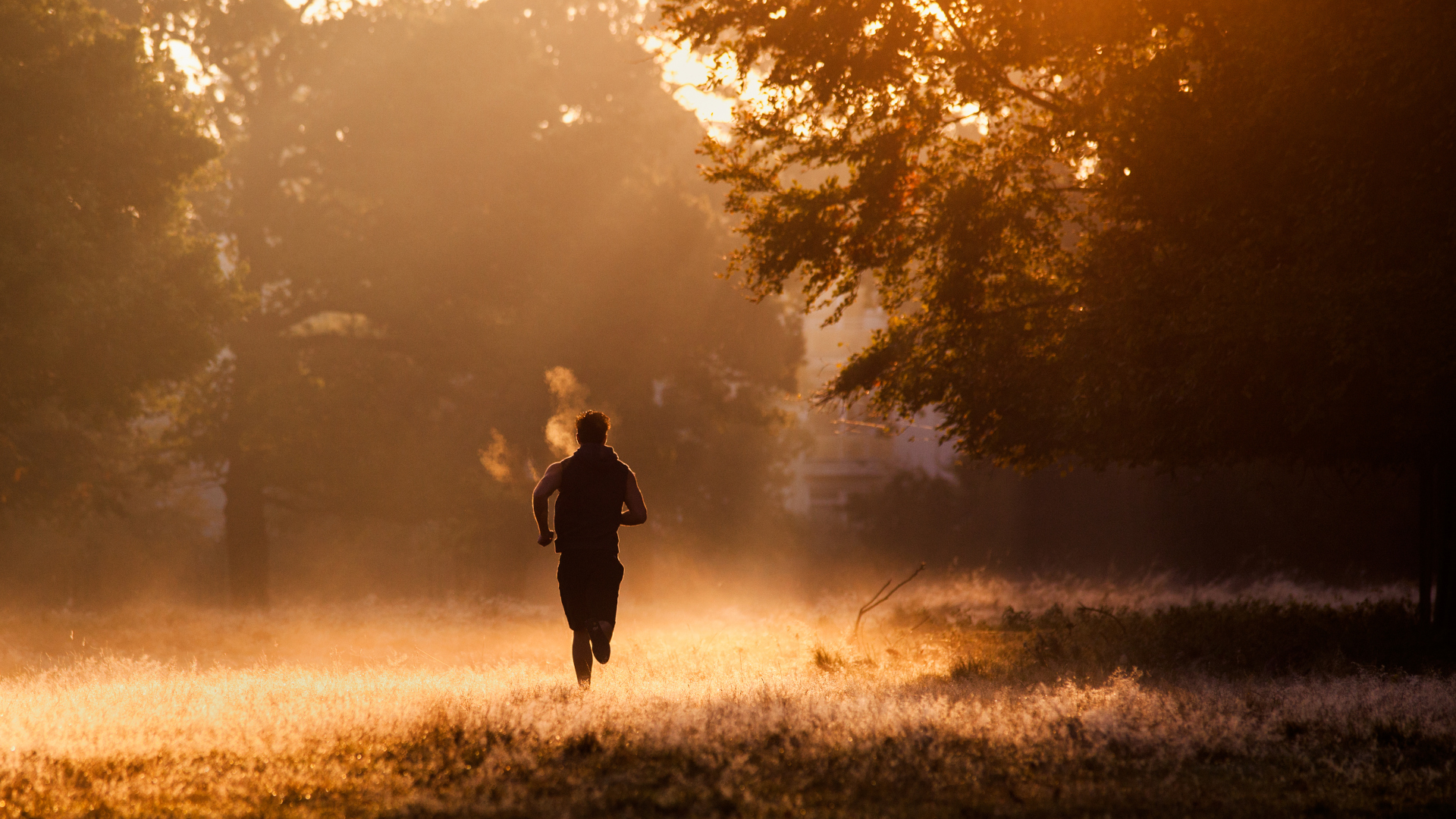How to run 10k: a complete training guide
If you’re already regularly running 5k, you can start our six-week program in the new year and run 10k in six weeks

Are you looking to spend a bit more time actually running in your best running leggings this year, rather than just extolling its stretchiness while relaxing on the couch? Lots of us are looking to hit the trails or road more, and you might be one of many hoping to up your distance to a 10k. If you’re already running 5k regularly – say around three times a week – you can start this program today and run a 10k in six weeks with the right training plan. Read on for all the reasons why you should up your running distance to 10k, what you’ll need to get there in six weeks and how to do it safely.

Why should I run a 10k?
Whether you’re planning to hit the soft stuff in your best trail running shoes or pound pavement (or even the treadmill, for that matter), running 10k is a great goal. It’s not nearly as daunting as training for a half marathon, but compared to a 5k, it’s long enough that you’ll have to train new running skills. For many of us, 5k is short enough that you can probably run it mostly anaerobically, but once you double your distance, you’ll have to improve your cardiovascular and muscular endurance. It’s also not so far that it’s typically associated with any detrimental effects that can come with high volume, high intensity long term running (assuming you’re not planning on running 10k every day!).
In fact, as we outlined in our article on what makes a good running pace, running 10k should only take you about an hour at an average pace. According to the fitness tracking app Strava, based on 14 million logged runs in 2015, the average speed for men in America is 9:03 minutes per mile and for women it’s 10:21 per mile. An hour of running will deliver lots of great results, from improved fitness to lots of time marinating in endorphins, but you can probably still fit it into your week two or three times without too much hassle. The ability to just lace up your running shoes and head out the door makes running really accessible.
Before we dive in, it’s important to note that this plan is for those of you who are already running regularly. If you’re starting from scratch, or returning after a long break or injury, it’s vital to take your 10k journey at a much slower pace. Consider starting with a program like Couch to 5k to ease in over 9 weeks, or training with a coach, before beginning this program (you can run 10k by Easter Sunday instead).

How to train for a 10k in 6 weeks
So can you just start running 10k on January 1? It’s probably been done, but it’s not advised. When you’re adding load to your muscles, ligaments, tendons and bones, the key is to give them time to adapt, so you don’t put yourself at risk of running injuries or repetitive strain conditions like shin splints or plantar fasciitis. Essentially, you want to progress slowly, adding a little distance each week.
If you’re already running, you know that a kilometer isn’t too far on flat or rolling terrain, so you could certainly just add a kilometer a week for five weeks to reach your goal, but you may find that you plateau, or become bored with this approach.
Instead, knowing the different types of running workouts – and incorporating some of them into your weekly training plan – can be a great way to improve your fitness, stay engaged in your workouts and optimize your performance. For the plan below, we’ve focused on one long run a week, one short recovery run to follow it, and two base runs which are neither particularly long nor short. It’s important to take a proper rest day following your long run, which can include a gentle walk, these yoga stretches for runners or a sports massage. On your remaining two days, we’ve suggested cross training which can really mean anything from weight lifting to swimming, or interval training, which we recommend you do with a trainer.
Advnture Newsletter
All the latest inspiration, tips and guides to help you plan your next Advnture!

Finally, it’s highly recommended you get a gait analysis and an appropriate pair of running shoes for your gait (make sure you know how to break them in properly). Pair these with a good running jacket and you’re ready to start going the distance!
WEEK 1
- Tuesday: 2.5k base run
- Wednesday: Cross training
- Thursday: 2.5k base run
- Friday: Cross training
- Saturday: 5k long run
- Sunday: Rest day
WEEK 2
- Monday: Recovery run: 2k
- Tuesday: 3k base run
- Wednesday: Cross training
- Thursday: 3k base run
- Friday: Cross training
- Saturday: 6k long run
- Sunday: Rest day
WEEK 3
- Monday: Recovery run: 2.5k
- Tuesday: 3.5k base run
- Wednesday: Cross training
- Thursday: 3.5k base run
- Friday: Cross training
- Saturday: 7k long run
- Sunday: Rest day

WEEK 4
- Monday: Recovery run: 2.5k
- Tuesday: 4k base run
- Wednesday: Cross training
- Thursday: 4k base run
- Friday: Cross training
- Saturday: 8k long run
- Sunday: Rest day
WEEK 5
- Monday: Recovery run: 3k
- Tuesday: 4.5k base run
- Wednesday: Cross training
- Thursday: 4.5k base run
- Friday: Cross training
- Saturday: 9k long run
- Sunday: Rest day
WEEK 6
- Monday: Recovery run: 3k
- Tuesday: 5k base run
- Wednesday: Cross training
- Thursday: 5k base run
- Friday: Cross training
- Saturday: 10k long run
- Sunday: Rest day
- Best trail running shoes: tested by experts for protection and agility
Julia Clarke is a staff writer for Advnture.com and the author of the book Restorative Yoga for Beginners. She loves to explore mountains on foot, bike, skis and belay and then recover on the the yoga mat. Julia graduated with a degree in journalism in 2004 and spent eight years working as a radio presenter in Kansas City, Vermont, Boston and New York City before discovering the joys of the Rocky Mountains. She then detoured west to Colorado and enjoyed 11 years teaching yoga in Vail before returning to her hometown of Glasgow, Scotland in 2020 to focus on family and writing.

